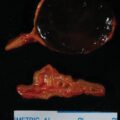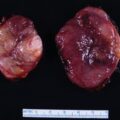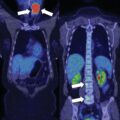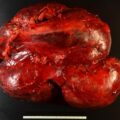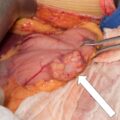The prognosis of patients with adrenocortical carcinoma (ACC) depends on several factors, including the European Network for the Study of Adrenal Tumours (ENSAT) stage, R0 (complete) surgical resection by an expert surgeon, and Ki-67 index. , ACC can present with the inferior vena cava (IVC), renal vein, or adrenal vein tumor thrombus in up to 25% of cases. Patients with the IVC thrombus are considered to have ENSAT stage III disease and are at high risk of recurrence. Here we present a patient with a locally advanced ACC and a large IVC tumor thrombus.
Case Report
The patient was a 60-year-old woman who initially presented for evaluation of abdominal pain. Computed tomography (CT) abdominal imaging was performed and demonstrated a heterogeneous right adrenal mass that measured 11.0 × 10.5 × 10.0 cm ( Fig. 33.1 ). Subsequent F-18 fluorodeoxyglucose (FDG) positron emission tomography (PET) scan demonstrated intense FDG uptake in the adrenal mass without any other foci of activity. On evaluation, the patient noted a 40-pound weight gain over 2 years, facial fullness, but no hirsutism or acne. Her review of system was otherwise negative. On physical examination, her blood pressure was 149/90 mmHg and body mass index was 28.9 kg/m 2 . She had mild facial hirsutism and facial fullness without erythema. She had mild supraclavicular pads but no dorsocervical pad. She had no signs of proximal myopathy, no striae, and no edema. She was not taking any medications.
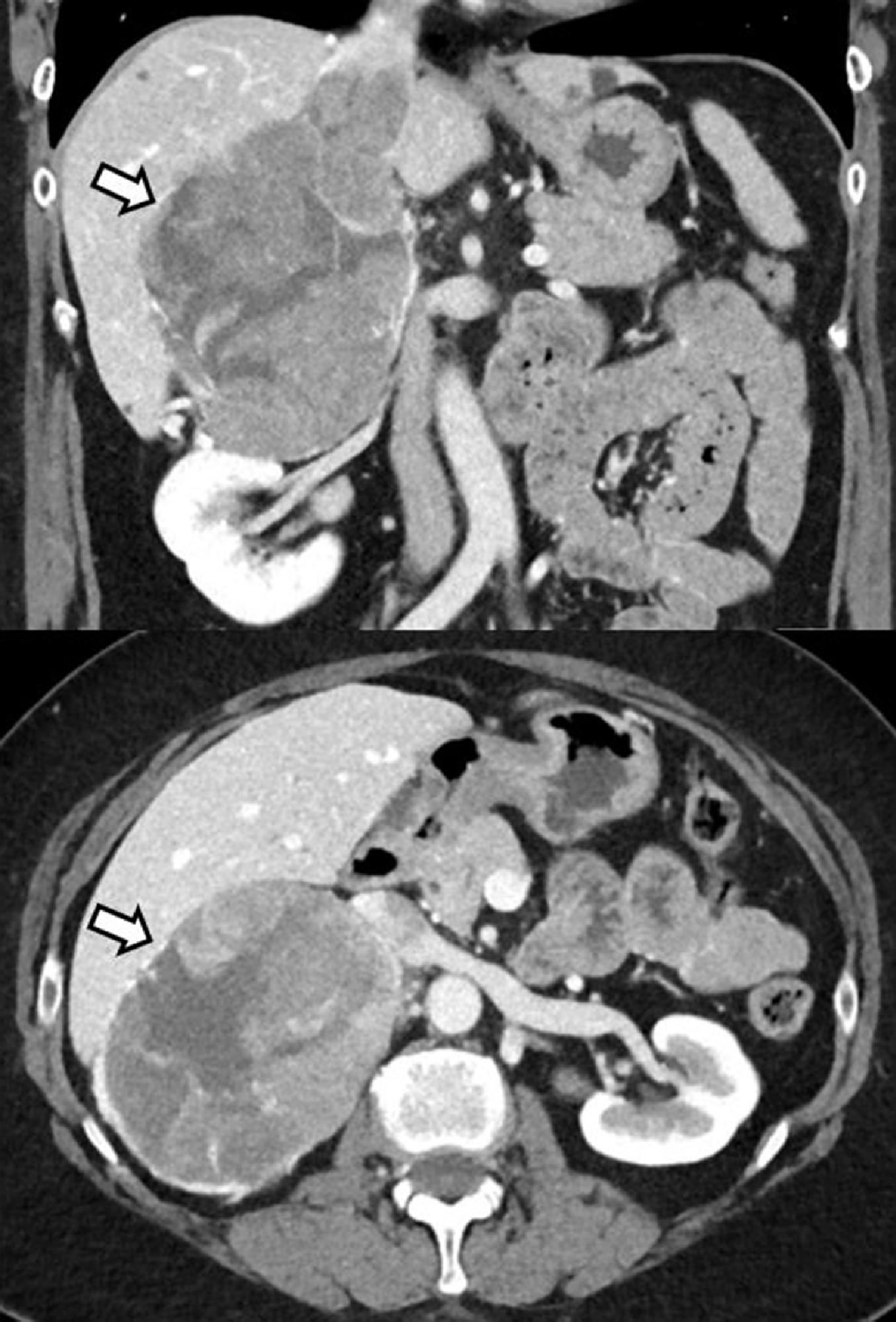
INVESTIGATIONS
Laboratory evaluation showed normal levels of urinary metanephrine and normetanephrine but was positive for increased excretion of cortisol, androgens, estrogen, progesterone, and steroid precursors (11-deoxycortisol, pregnenolone, 17-hydroxypregnenolone) ( Table 33.1 ).
| Biochemical Test | Result | Reference Range |
| Cortisol, mcg/dL | 17.8 | 7–21 |
| ACTH, pg/mL | <5 | 7.2–63 |
| DHEA-S, mcg/dL | 685, 931 | <15–157 |
| Androstenedione, ng/dL | 87 | 30–200 |
| Total testosterone, ng/dL | 18 | 8–60 |
| Estradiol, pg/mL | 28, 36 | <10 |
| Progesterone, ng/mL | 0.81 | <0.20 |
| 17-Hydroxyprogesterone, ng/dL | 70 | <51 |
| Pregnenolone, ng/dL | 260 | 33–248 |
| 17-Hydroxypregnenolone, ng/dL | 597 | 31–455 |
| 11-Deoxycortisol, ng/dL | 176 | 10–79 |
| Aldosterone, ng/dL | <4 | <21 |
| Plasma renin activity, ng/mL per hour | 1.9 | ≤0.6–3 |
| 24-Hour urine cortisol, mcg/24 h | 270, 189 | <45 |
| 24-Hour urine metanephrine, mcg/24 h | 20 | <400 |
| 24-Hour urine normetanephrine, mcg/24 h | 182 | <900 |
Stay updated, free articles. Join our Telegram channel

Full access? Get Clinical Tree



